In this webinar, representatives from multiple sectors of the livestock production industry are featured to learn how each sector is approaching the complex problem of antibiotic resistance with management strategies to improve antimicrobial stewardship in live animal production and across the food production system. This presentation was originally broadcast on August 20, 2021. Continue reading “Addressing Antimicrobial Resistance Through Livestock Management”
Human Health: Pathogens and Contaminants in Livestock Systems
This webinar provides practical guidance on reducing pathogen and inhalation exposures in livestock operations and identifies ways to protect human health and those we love. This presentation was originally broadcast on May 15, 2020. More… Continue reading “Human Health: Pathogens and Contaminants in Livestock Systems”
The Use of USDA-NRCS Conservation Innovation Grants to Advance Air Quality Improvements
USDA-NRCS has nearly fifteen years of Conservation Innovation Grant project experience, and several of these projects have provided a means to learn more about various techniques for addressing air emissions from animal agriculture. The overall goal of the Conservation Innovation Grant program is to provide an avenue for the on-farm demonstration of tools and technologies that have shown promise in a research setting and to further determine the parameters that may enable these promising tools and technologies to be implemented on-farm through USDA-NRCS conservation programs.
What Did We Do?
Several queries for both National Competition and State Competition projects in the USDA-NRCS Conservation Innovation Grant Project Search Tool (https://www.nrcs.usda.gov/wps/portal/nrcs/ciglanding/national/programs/financial/cig/cigsearch/) were conducted using the General Text Search feature for keywords such as “air”, “ammonia”, “animal”, “beef”, “carbon”, “dairy”, “digester”, “digestion”, “livestock”, “manure”, “poultry”, and “swine” in order to try and capture all of the animal air quality-related Conservation Innovation Grant projects. This approach obviously identified many projects that might be related to one or more of the search words, but were not directly related to animal air quality. Further manual review of the identified projects was conducted to identify those that specifically had some association with animal air quality.
What Have We Learned?
Out of nearly 1,300 total Conservation Innovation Grant projects, just under 50 were identified as having a direct relevance to animal air quality in some way. These projects represent a USDA-NRCS investment of just under $20 million. Because each project required at least a 50% match by the grantee, the USDA-NRCS Conservation Innovation Grant program has represented a total investment of approximately $40 million over the past 15 years in demonstrating tools and technologies for addressing air emissions from animal agriculture.
The technologies that have been attempted to be demonstrated in the animal air quality-related Conservation Innovation Grant projects have included various feed management strategies, approaches for reducing emissions from animal pens and housing, and an approach to mortality management. However, the vast majority of animal air quality-related Conservation Innovation Grant projects have focused on air emissions from manure management – primarily looking at anaerobic digestion technologies – and land application of manure. Two projects also developed and enhanced an online tool for assessing livestock and poultry operations for opportunities to address various air emissions.
Future Plans
The 2018 Farm Bill re-authorized the Conservation Innovation Grant Program through 2023 at $25 million per year and allows for on-farm conservation innovation trials. It is anticipated that additional air quality projects will be funded under the current Farm Bill authorization.
Authors
Greg Zwicke, Air Quality Engineer, USDA-NRCS National Air Quality and Atmospheric Change Technology Development Team
greg.zwicke@ftc.usda.gov
Additional Information
More information about the USDA-NRCS Conservation Innovation Grants program is available on the Conservation Innovation Grants website (https://www.nrcs.usda.gov/wps/portal/nrcs/main/national/programs/financial/cig/), including application information and materials, resources for grantees, success stories, and a project search tool.
The authors are solely responsible for the content of these proceedings. The technical information does not necessarily reflect the official position of the sponsoring agencies or institutions represented by planning committee members, and inclusion and distribution herein does not constitute an endorsement of views expressed by the same. Printed materials included herein are not refereed publications. Citations should appear as follows. EXAMPLE: Authors. 2019. Title of presentation. Waste to Worth. Minneapolis, MN. April 22-26, 2019. URL of this page. Accessed on: today’s date.
Quantitative Analysis of Words in Popular Press Articles about Livestock and Environment
Livestock farming practices and technologies, like many aspects of agriculture and industry, continue to evolve. As technology and attitudes change regarding livestock farming, public response changes as well; this is reflected in the way that people talk and write about the subject. This change and growth is a common topic of both public and technical debate and scrutiny. Databases on the internet collect public articles and documents related to livestock farming dating back to the early 1980’s. The information in these articles can be evaluated using a number of computer science based approaches. These data can help to highlight how significant past events and their impacts were perceived, and possibly predict how future trends within the industry will be described in popular press/media.
What Did We Do?
We gathered popular press articles from an online database, Factiva, with the search terms “livestock and odor,” from the year 2000 to the present. A computer program developed using machine learning processes: (1) cleans and structures the individual articles into text files; and (2) quantifies the importance and frequency of words in individual and groups of articles, by year. The program assigns two measures of importance to each word. Words that frequently occur in many articles per year provide broad overarching ideas and subjects. Words that are deemed important to each individual article provide more nuanced data including companies, people, and equipment discussed in livestock farming. To demonstrate the results, this data is visualized in tables and graphs to show patterns in subjects as they develop and change over time.
What Have We Learned?
This analysis method gives us a quantitative basis for reviewing the change in importance of words over time. All analysis after choosing the subject and search terms is done by a computer program, protecting the outcomes from reader bias. Changes in word importance or frequency can be supported with numerical data and easily visualized from year to year. The different approaches also allow for inferences between long-term subjects and ideas (Table 1), and shorter term players in the industry (Table 2).
This analysis method does not pull out the context that any of the words are used. Manure and waste are two means of describing the same material, with different connotations. Manure and waste appeared at similar frequencies in many, but not all years. Dairy was more prominent in 2011 and 2013, but hogs (or synonyms) appeared in most years. Refinements to the article search protocol could limit the articles to those of opinion (i.e. editorials) or regional perspectives. There are opportunities for this method to inform historical reviews of livestock and the environment, and inform future communication efforts.
Future Plans
There are a number of opportunities to extend this project in the future. One would be to experiment with different search terms and databases to see how outcomes depend on the data source. Another opportunity would be to apply the quantitative method to other applications. The computer program could be applied to any database and so the method has utility to topics other than livestock farming.
Authors
Ryan Felton, Undergraduate Research Assistant, University of Minnesota
Erin Cortus, Assistant Professor and Extension Engineer, University of Minnesota
ecortus@umn.edu
Additional Information
Project support provided by the University of Minnesota UROP program.
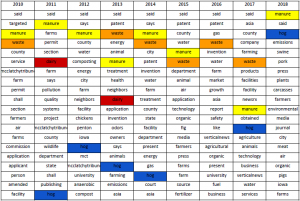
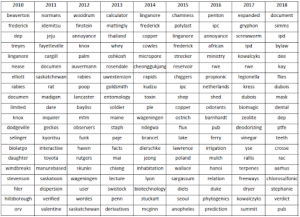
The authors are solely responsible for the content of these proceedings. The technical information does not necessarily reflect the official position of the sponsoring agencies or institutions represented by planning committee members, and inclusion and distribution herein does not constitute an endorsement of views expressed by the same. Printed materials included herein are not refereed publications. Citations should appear as follows. EXAMPLE: Authors. 2019. Title of presentation. Waste to Worth. Minneapolis, MN. April 22-26, 2019. URL of this page. Accessed on: today’s date.
USDA-NRCS and the National Air Quality Site Assessment Tool (NAQSAT) for Livestock and Poultry Operations
Proceedings Home | W2W Home 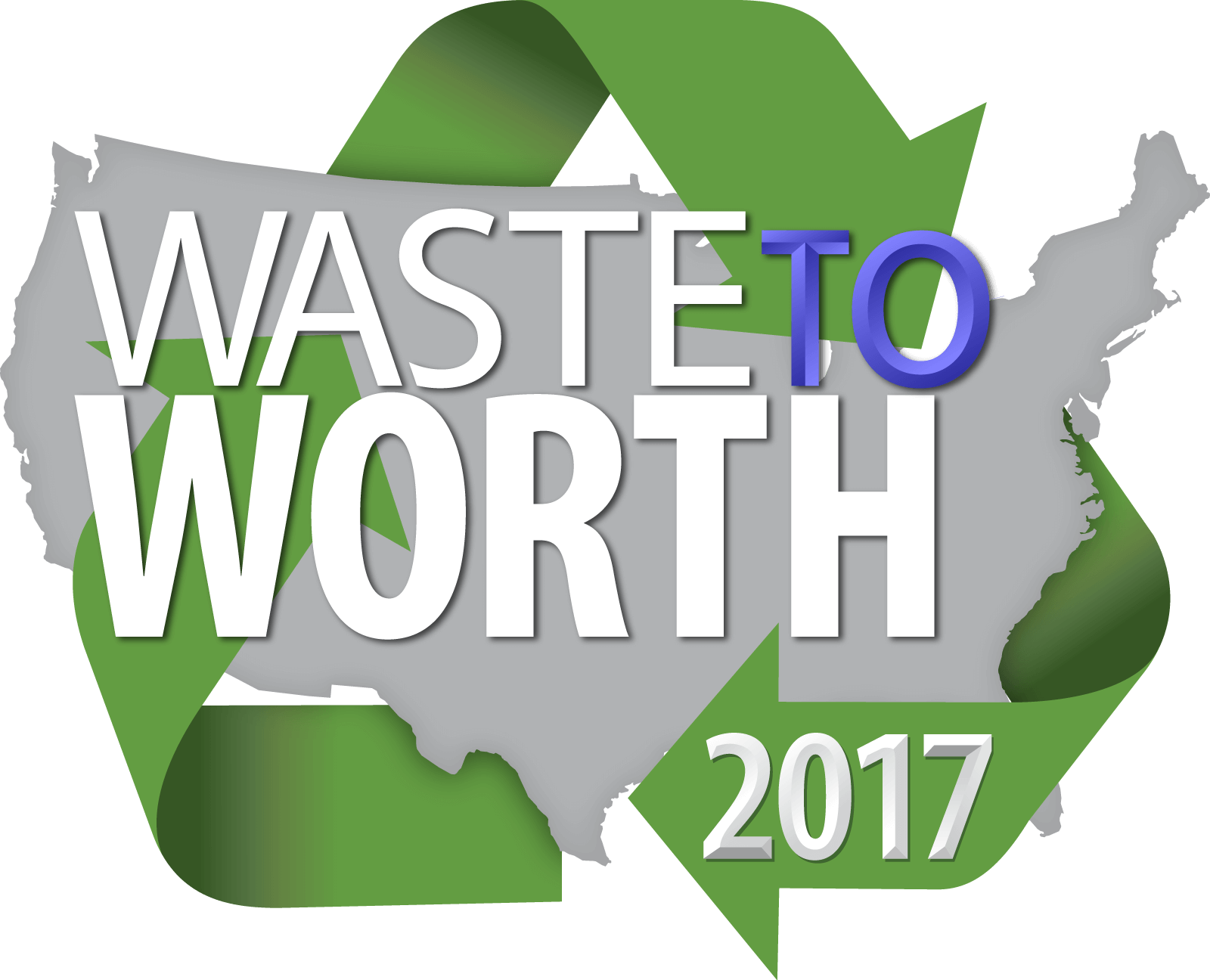
Purpose
The National Air Quality Site Assessment Tool (NAQSAT) was developed as a first-of-its-kind tool to help producers and their advisors assess the impact of management on air emissions from livestock and poultry operations and identify areas for potential improvement related to those air emissions.
What did we do?
In 2007, several land-grant universities, with leadership from Michigan State University, began developing NAQSAT under a USDA-NRCS Conservation Innovation Grant (CIG). The initial tool included beef, dairy, swine, and poultry operations. A subsequent CIG project, with leadership from Colorado State University, made several enhancements to the tool, including adding horses to the species list. In 2015, USDA-NRCS officially adopted NAQSAT as an approved tool for evaluating air quality resource concerns at livestock and poultry operations. USDA-NRCS also contracted with Florida A&M University in 2015 to provide several regional training workshops on NAQSAT to NRCS employees. Six training workshops have been completed to date (Raleigh, NC; Modesto, CA; Elizabethtown, PA; Lincoln, NE; Richmond, VA; and Yakima, WA) with assistance from multiple NAQSAT development partners. Additionally, USDA-NRCS revised its comprehensive nutrient management plan (CNMP) policy in October 2015 to make the evaluation of air quality resource concerns mandatory as part of CNMP development.

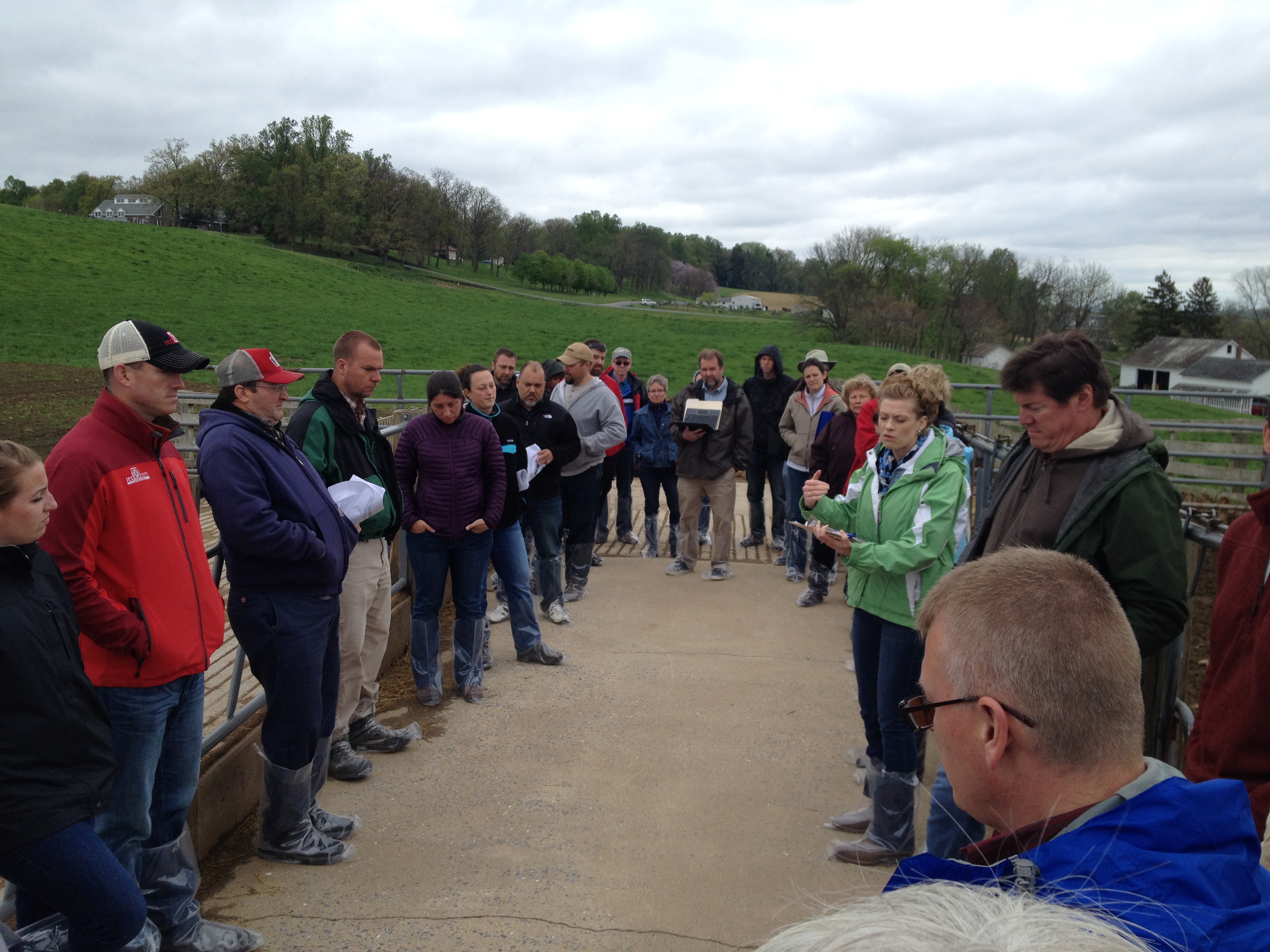

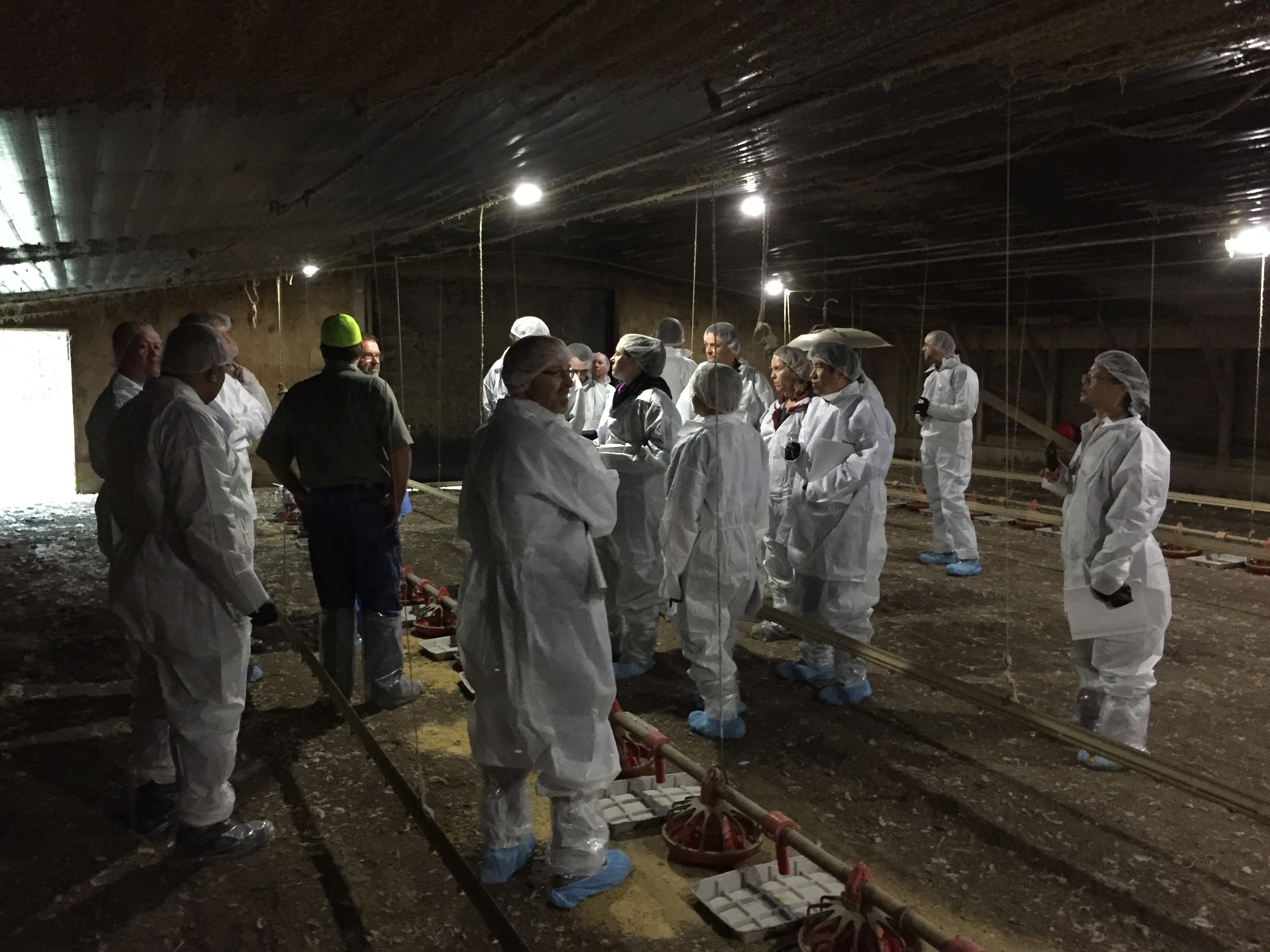
What have we learned?
NAQSAT has proven to be a useful tool for bench-marking the air emissions impacts of current management on confinement-based livestock and poultry operations. In the training sessions, students have been able to complete NAQSAT runs on-site with the producer or producer representative via tablet or smartphone technologies. Further classroom discussion has helped to better understand the questions and answers and how the NAQSAT results can feed into the USDA-NRCS conservation planning process. Several needed enhancements and upgrades to the tool have been identified in order to more closely align the output of the tool to USDA-NRCS conservation planning needs. NAQSAT has also proven to be useful for evaluating the air quality resource concern status of an operation in relation to the CNMP development process.
Future Plans
It is anticipated that the identified needed enhancements and upgrades will be completed as funding for further NAQSAT development becomes available. Additionally, as use of NAQSAT by USDA-NRCS and our conservation planning and CNMP development partners expands, additional training and experience-building opportunities will be needed. The NAQSAT development team has great geographic coverage to assist in these additional opportunities.
Corresponding author, title, and affiliation
Greg Zwicke, Air Quality Engineer – Air Quality and Atmospheric Change Team, USDA-NRCS
Corresponding author email
Other authors
Greg Johnson, Air Quality and Atmospheric Change Team Leader, USDA-NRCS; Jeff Porter, Animal Nutrient and Manure Management Team Leader, USDA-NRCS; Sandy Means, Agricultural Engineer – Animal Nutrient and Manure Management Team, USDA-NRCS
Additional information
naqsat.tamu.edu
https://lpelc.org/naqsat-for-swine-and-poultry
https://lpelc.org/naqsat-for-beef-and-dairy/
Acknowledgements
C.E. Meadows Endowment, Michigan State University
Colorado Livestock Association
Colorado State University
Florida A&M University
Iowa Turkey Federation
Iowa Pork Producers
Iowa Pork Industry Center
Iowa State University
Iowa State University Experiment Station
Kansas State University
Michigan Milk Producers Association
Michigan Pork Producers Association
Michigan State University
Michigan State University Extension
National Pork Board
Nebraska Environmental Trust
Oregon State University
Penn State University
Purdue University
Texas A&M University
University of California, Davis
University of Georgia
University of Georgia Department of Poultry Science
University of Idaho
University of Maryland
University of Maryland Department of Animal and Avian Sciences
University of Minnesota
University of Missouri
University of Nebraska
USDA-ARS
Virginia Tech University
Washington State University
Western United Dairymen
Whatcom County (WA) Conservation District
The authors are solely responsible for the content of these proceedings. The technical information does not necessarily reflect the official position of the sponsoring agencies or institutions represented by planning committee members, and inclusion and distribution herein does not constitute an endorsement of views expressed by the same. Printed materials included herein are not refereed publications. Citations should appear as follows. EXAMPLE: Authors. 2017. Title of presentation. Waste to Worth: Spreading Science and Solutions. Cary, NC. April 18-21, 2017. URL of this page. Accessed on: today’s date.
Talking Climate with Animal Agriculture Advisers
Proceedings Home | W2W Home 
Purpose
The Animal Agriculture in a Changing Climate (AACC) project was established to leverage limited Extension expertise across the country in climate change mitigation and adaptation, with the goal of building capacity among Extension professionals and other livestock advisers to address climate change issues.
What did we do?
The Animal Agriculture in a Changing Climate project team created a suite of educational programs and products to build capacity across the United States. Key products of the project:
- Online courses: 363 participants registered with a 35% completion rate (Whitefield et al., JOE, 2016)
- National and regional symposia and workshops: 11 face-to-face conferences with approximately 1,350 attendees.
- Website: Over 5,900 users with over 21,100 total views. Project videos have received nearly 8,900 views.
- Social media: AACC weekly blog (990 subscribers); daily Southeast Climate Blog (38,506 site visits); regional newsletters (627 subscribers); Facebook & Twitter (280 followers)
- Ready-to-use videos, slide sets, and fact sheets
- Educational programming: 390 presentations at local, regional, and international meetings
- Collaboration with 14 related research and education projects
What have we learned?
A survey was sent out to participants in any of the project efforts, in the third year of the project and again in year five. Overall, participants found the project resources valuable, particularly the project website, the online course, and regional meetings. We surveyed two key measures: abilities and motivations. Overall, 60% or more of respondents report being able or very able to address all eight capabilities after their participation in the AACC program. A sizeable increase in respondent motivation (motivated or very motivated) existed after participation in the program, particularly for helping producers take steps to address climate change, informing others about greenhouse gases emitted by agriculture, answering client questions, and adding new information to programs or curriculum.
The first challenge in building capacity in Extension professionals was finding key communication methods to engage them. Two key strategies identified were to: 1) start programming with a discussion of historical trends and agricultural impacts, as locally relevant as available, and 2) start the discussion around adaptation rather than mitigation. Seeing the changes that are already apparent in the climatic record and how agriculture has adapted in the past and is adapting to more recent weather variability and climatic changes often were excellent discussion starters.
Another challenge was that many were comfortable with the science, but were unsure how to effectively communicate that science with the sometimes controversial discussions that surround climate change. This prompted us to include climate science communication in most of the professional development opportunities, which were then consistently rated as one of the most valuable topics.
Future Plans
The project funding ended on March 31, 2017. All project materials will continue to be available on the LPELC webpage.
Corresponding author, title, and affiliation
Crystal Powers, Extension Engineer, University of Nebraska – Lincoln
Corresponding author email
Other authors
Rick Stowell, University of Nebraska – Lincoln
Additional information
lpelc.org/animal-agriculture-and-climate-change
Acknowledgements
Thank you to the project team:
Rick Stowell, Crystal Powers, and Jill Heemstra, University of Nebraska – Lincoln
Mark Risse, Pam Knox, and Gary Hawkins, University of Georgia
Larry Jacobson and David Schmidt, University of Minnesota
Saqib Mukhtar, University of Florida
David Smith, Texas A&M University
Joe Harrison and Liz Whitefield, Washington State University
Curt Gooch and Jennifer Pronto, Cornell University
This project was supported by Agricultural and Food Research Initiative Competitive Grant No. 2011-67003-30206 from the USDA National Institute of Food and Agriculture.
The authors are solely responsible for the content of these proceedings. The technical information does not necessarily reflect the official position of the sponsoring agencies or institutions represented by planning committee members, and inclusion and distribution herein does not constitute an endorsement of views expressed by the same. Printed materials included herein are not refereed publications. Citations should appear as follows. EXAMPLE: Authors. 2017. Title of presentation. Waste to Worth: Spreading Science and Solutions. Cary, NC. April 18-21, 2017. URL of this page. Accessed on: today’s date.
Northwest Winter Feeding Assessment Tool
Can Grazing Operations Be an AFO Based on Winter Feeding Practices?
Assessment of and protection for water quality resource concerns impacted by livestock winter feeding practices
Grazing lands management assistance with NRCS focuses on forage and range conditions for livestock producers and management practices during the growing season. Animal waste management system installations with NRCS have focused on water quality protection associated with confined animal feeding operations. The winter feeding management strategies of grazed livestock can also have a significant seasonal impact on the quality of nearby surface water resources.
In northern regions, winter is a dormant season for forage and a time when significant precipitation can occur. In recent years EPA has clarified the regulatory definition of an Animal Feeding Operation (AFO). The winter feeding management practices employed by grazing operations may risk water quality resource concerns and meet the EPA definition of an AFO.
A planning tool to identify sites where livestock density during the winter feeding period could create a resource concern can facilitate addressing this water quality issue. This assessment tool can review the applicability of NRCS practices for an animal waste management system and if appropriate move the planning process forward for a site design to protect surface water quality resources as needed for the seasonal feeding period.
What did we do?
As the Environmental Engineer at the West National Technology Support Center I am developing the planning tool for livestock winter feeding sites. The landowner can participate in developing the concerns to be considered for their natural resources and operational practices. Animal manure and the nutrient balance with forage crops can be checked. A review is made if the winter feeding operation approaches the EPA definition of an AFO. The buffer quality conditions can be checked between the feeding site and the surface water sources. This tool can help engage the landowner in a conversations about adaptive management options for pasture or waste storage facility structures as might be recommended for higher animal density management over winter.
What have we learned?
Resource planning must include the concerns and values of the landowner and the practice must fit with the characteristics of their operation. Animal production and natural resource management is ultimately effected by landowner decisions for the management of livestock and protection of natural resources.
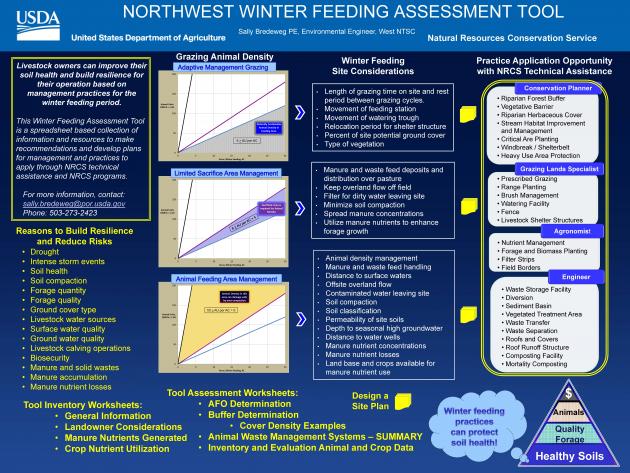 Northwest winter feeding assessment tool
Northwest winter feeding assessment tool

Future Plans
Continue to test the winter feeding assessment tool and make revisions for utilization.
Authors
Sally Bredeweg PE, Environmental Engineer, NRCS West National Technology Support Center sally.bredeweg@por.usda.gov
Additional information
NRCS – Agricultural Waste Management Field Handbook
NRCS – Comprehensive Nutrient Management Planning Procedure
EPA – Animal Feeding Operation (AFO) as defined in the EPA Technical Manual for Concentrated Animal Feeding Operations, EPA 833-F12-001, February 2012
Acknowledgements
NRCS Range Management Consortia West Region
NRCS staff in WA, CO, UT, CA
EPA region 10
Growing Forward, British Columbia Init
The authors are solely responsible for the content of these proceedings. The technical information does not necessarily reflect the official position of the sponsoring agencies or institutions represented by planning committee members, and inclusion and distribution herein does not constitute an endorsement of views expressed by the same. Printed materials included herein are not refereed publications. Citations should appear as follows. EXAMPLE: Authors. 2015. Title of presentation. Waste to Worth: Spreading Science and Solutions. Seattle, WA. March 31-April 3, 2015. URL of this page. Accessed on: today’s date.
Enhancing the Productivity of Livestock Production Through Improved Feeding: Empirical Evidence from Highland of Ethiopia
|
Forage development as feed resources in Tiyo district (Elephant grass) |
![]() Waste to Worth home | More proceedings….
Waste to Worth home | More proceedings….
Abstract
The Feed Assessment Tool (FEAST) was used to characterize the farming and livestock system in Limu-Bibilo district in Ethiopia. Prior to data collection, a Sustainable Livelihoods Framework (SLF) was conducted in August 2012. The quantitative data from individual interviews of 18 farmers were entered and analyzed using FEAST. Livestock production is an integral component of the farming system of the study area. Cattle are kept for food, cash, draught power and manure production. For the above average group grazing, crop residues, and cultivated fodder contributes 49%, 25% and 12% to the dry matter (DM) content of the total diet respectively. Similarly, grazing, crop residue, and purchased feeds contributes 33%, 23% and 20% of the DM respectively as to the below average groups. Grazing, crop residues and cultivated fodders are the major feed resources that are contributing 49%, 20%, and 14% of the metabolizable energy (ME) respectively as to the above average group and 32%, 17% and 14% respectively to the below average group. For above average group Grazing, cultivated fodder, purchased feeds, and crop residues contribute 42%, 17%, 16%, and 15% crude protein (CP) content respectively whereas purchased feeds, grazing, and cultivated fodders contribute 35%, 25%, and 15% of CP in the total diet in the case of below average groups. The problems that were raised by the farmers encompass, shortage of feed, scarcity of water, unavailability of cash or credit services, shortage of veterinary service, lack AI service, awareness and communication gap. In light of the problems the study recommends the development of herbaceous forage legumes and fodder trees species which can mitigate the constraints of feed scarcity. Training on cost effective livestock ration formulation techniques to reduce the feed shortages observed must be part of a strategy which requires attention to improve the production of the sector.
Why Study Feed Resource Availability?
The study area Lemu-Bilbilo district is located in Arsi zone in Oromia regional state of Ethiopia. It is characterized by a crop-livestock mixed farming system where dairy production contributes significantly to livelihoods of the smallholder farmers. Market-oriented dairy production based on crossbred dairy cows is also practiced in the district. However, economic benefits accruing from the livestock sector are not significant. Livestock production is constrained by ecological, technical and economic limitations which result in severe feed shortages. Thus, the objective of the current study was to assess feed resource availability and utilization using a feed assessment tool (FEAST) within the context of the overall farming and livestock production systems and to determine the potential of site-specific feed interventions in Lemu Bilbilo district.
What Will Be Learned In This Presentation?
The feed resources in the study area was primarily natural pasture, crop residue (cereals and legumes), purchased feed, cultivated fodder and naturally occurring and collected fodder. Crop residue was a major component in the diet of livestock. Animals rely on crop residues throughout the year especially when grazing pastures are scarce. Farmers who do not have adequate quantity of crop residue from cropping activities purchase additional straw from other farmers who produced cereals in surplus. The straw was usually fed to the animals without any form of processing or manipulation prior to feeding. However, some farmers were aware of mixing straws with linseed cake, wheat bran or salt as a means of improving quality and palatability. The contribution of grazing to dry matter (DM), metabolizable energy (ME) and crude protein content (CP) was relatively high for the above average group farmers who reserve more land for grazing pasture through land renting. Due to limitations of grazing and crop residue resources, farmers in the below average group were forced to purchase feeds. Purchased feeds thus contribute relatively higher to the DM, ME and CP of their livestock diets compared to that of the above average farmers. Feed shortage was identified by both groups of farmers as the most important problem of livestock production. Other constraints like water problem, inefficient veterinary and AI services were similar and equally important for farmers in both groups.
|
Silage pit in AMAE which was used as training ground for practical feed formulation techniques |
Presenters
Presenters: Mesay Yami1, Bedada Begna1, TeklemedihinTeklewold1, Jane Wamatu 2, Peter Thorne 3 and Alan Duncan
1Ethiopian Institute of Agricultural Research (EIAR), Kulumsa Agricultural Research center, Socio-economics, extension Research Process, P. O. Box 489, Assela, Ethiopia: 2 International Center for Agricultural Research in the Dry Areas (ICARDA), Associate Scientist – Animal Nutritionist,: 3Crop Livestock Scientist, International Livestock Research Institute (ILRI), P.O .Box 5689, Addis Ababa, Ethiopia:
*Corresponding author E-mail: mesay44@gmail.com
The authors are solely responsible for the content of these proceedings. The technical information does not necessarily reflect the official position of the sponsoring agencies or institutions represented by planning committee members, and inclusion and distribution herein does not constitute an endorsement of views expressed by the same. Printed materials included herein are not refereed publications. Citations should appear as follows. EXAMPLE: Authors. 2013. Title of presentation. Waste to Worth: Spreading Science and Solutions. Denver, CO. April 1-5, 2013. URL of this page. Accessed on: today’s date.
Impacts of the Michigan Agriculture Environmental Assurance Program
![]() Waste to Worth home | More proceedings….
Waste to Worth home | More proceedings….
Abstract
The Michigan Agriculture Environmental Assurance Program (MAEAP) is a holistic approach to environmental protection. It helps farmers evaluate their entire operation, regardless of size or commodity, and make sustainable management decisions balancing society’s needs, the environment, and economics. MAEAP is a partnership effort that aims to protect natural resources and build positive communities by working with farmers on environmentally responsible agricultural production practices.
To become MAEAP verified, farmers must complete three comprehensive steps: educational seminars, an on-farm risk assessment, and development and implementation of an action plan addressing potential environmental risks. The Michigan Department of Agriculture and Rural Development (MDARD) conducts an on-farm inspection to verify program requirements related to applicable state and federal environmental regulations, including the Generally Accepted Agricultural and Management Practices (GAAMPs). MAEAP benefits Michigan by helping to protect the Great Lakes by using proven scientific standards to improve air, water, and soil quality. Annual phosphorus reduction through MAEAP is over 340,451 pounds per year which is enough to grow almost 85,104 tons of algae in lakes and streams. Farming is an environmentally intense practice and the MAEAP-verification process ensures farmers are making choices that balance production and environmental demands. The measures aimed at protecting air, soil, water, and other environmental factors mean that MAEAP-verified farmers are committed to utilizing farming practices that protect Michigan’s natural resources.
 |
Purpose
The Michigan Agriculture Environmental Assurance Program (MAEAP) is an innovative, proactive program that assists farms of all sizes and all commodities voluntarily prevent or minimize agricultural pollution risks. MAEAP is a collaborative effort of farmers, Michigan Department of Agriculture and Rural Development, Michigan Farm Bureau, commodity organizations, universities, conservation districts, conservation groups and state and federal agencies. MAEAP teaches farmers how to identify and prevent environmental risks and work to comply with state and federal environmental regulations. Farmers who successfully complete the three phases of a MAEAP system (Farmstead, Cropping or Livestock) are rewarded by becoming verified in that system.
What Did We Do?
To become MAEAP-verified, farmers must complete three comprehensive steps: educational seminars, a thorough on-farm risk assessment, and development and implementation of an action plan addressing potential environmental risks. The Michigan Department of Agriculture and Rural Development (MDARD) conducts an on-farm inspection to verify program requirements related to applicable state and federal environmental regulations, including the Generally Accepted Agricultural Management Practices. To retain MAEAP verification, a farm must repeat all three steps including MDARD inspection every three years.

Local MAEAP farm verified in the Cropping System |
What Have We Learned?
The MAEAP program is positively influencing Michigan producers and the agriculture industry. Annually, an average of 5,000 Michigan farmers attend an educational session geared toward environmental stewardship and MAEAP verification. To date, over 10,000 farms are participating with over 1,500 MAEAP verifications. On a yearly basis, over $1.2 million is spent for practice implementation by producers working towards MAEAP verification. In 2012; the sediment reduced on MAEAP-verified farms could have filled 28,642 dump trucks (10 yards each), the phosphorus reduced on MAEAP farms could have grown 138,056 tons of algae in surface waters, and the nitrogen reduced on MAEAP farms could have grown 45,515 tons of algae in surface waters.
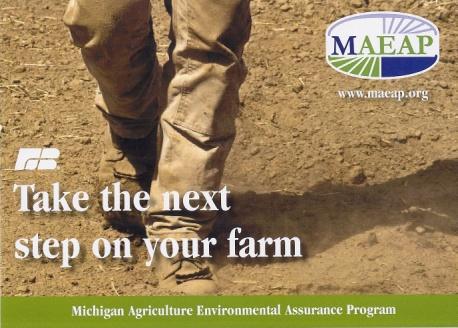
An example of the partnership between MAEAP and Michigan Farm Bureau |
Future Plans
Michigan Governor Rick Snyder has taken a vested interest in the value of the MAEAP program. In March of 2011, Governor Snyder signed Public Acts 1 and 2 which codify MAEAP into law. This provides incentives and structure for the MAEAP program. It is a goal of Governor Snyder’s to have 5,000 farms MAEAP-verified by 2015. Most importantly, through forward thinking MAEAP strives to connect farms and communities, ensure emergency preparedness and protect natural resources.
Authors
Jan Wilford, Program Manager, Michigan Department of Agriculture & Rural Development – Environmental Stewardship Division, wilfordj9@michigan.gov
Shelby Bollwahn, MAEAP Technician – Hillsdale Conservation District
shelby.bollwahn@mi.nacdnet.net
Additional Information
www.maeap.org – MAEAP Website
http://michigan.gov/mdard/0,4610,7-125-1567_1599_25432—,00.html – MDARD MAEAP Website
http://www.facebook.com/mimaeap – MAEAP Facebook Page
Acknowledgements
MDARD MAEAP Program Office Communications Department
Michigan Farm Bureau
Michigan Association of Conservation Districts
Hillsdale County Farm Bureau
Hillsdale Conservation District
Handout version of the poster (8.5 x 11; pdf format)
The authors are solely responsible for the content of these proceedings. The technical information does not necessarily reflect the official position of the sponsoring agencies or institutions represented by planning committee members, and inclusion and distribution herein does not constitute an endorsement of views expressed by the same. Printed materials included herein are not refereed publications. Citations should appear as follows. EXAMPLE: Authors. 2013. Title of presentation. Waste to Worth: Spreading Science and Solutions. Denver, CO. April 1-5, 2013. URL of this page. Accessed on: today’s date.
Livestock and Poultry Mortality Management Frequently Asked Questions (FAQs)
Scroll through the slideshows below to see many of the frequently asked questions (FAQs) about managing animal carcasses. After each question you can play a short (1-2 minute) video or scroll to the next question. Also see the page “Managing Livestock and Poultry Mortalities“. This series of short (<2 minutes each) videos is also gathered into playlist on YouTube.
Options to Dispose of Livestock and Poultry Carcasses
Options for Managing Animal Mortalities
No farmer or ranch likes to lose an animal, but the need to dispose of livestock or poultry carcasses is an inescapable part of farming.
Storified by LPE Learning Center · Thu, Oct 04 2012 09:09:17
Composting Animal Mortalities
Composting Animal Mortalities
One option for managing livestock or poultry carcasses is composting. What are some of the most frequently asked questions when people first consider composting dead animals?
Storified by LPE Learning Center · Thu, Oct 04 2012 09:31:49
Catastrophic Mortality Management
Catastrophic Mortality Management
Sometimes fires, natural disasters, disease, or other problems unfortunately result in the loss of large numbers of livestock. If you do not plan ahead, you could be overwhelmed if this situation occurs for you.
Storified by LPE Learning Center · Thu, Oct 04 2012 10:42:04
Related Information
- eXtension: Managing Livestock and Poultry Mortalities
- June, 2009 webcast presentation on Managing Livestock Mortalities Discusses regulations and an overview of several methods with an emphasis on composting.
- LPES Curriculum Mortality Review
- Question #27119, What is animal carcass composting? link
- Question #27787, How critical are carbon to nitrogen ratios (C:N) in large carcass mortality composting? link
- Question #27171, Should we be concerned about E. coli O157:H7 in manure compost? link
- Question #27172, By what factor does composting manure reduce the pathogens present? link
Author: Joshua Payne, Oklahoma State University
Reviewers: Shafiqur Rahman, North Dakota State University and Jean Bonhotal, Cornell University



